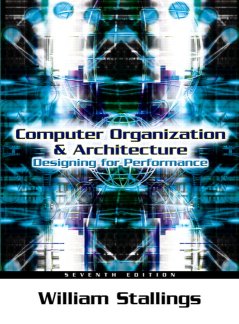Text:

Computer Organization & Architecture
Designing for Performance Seventh Edition (2006)
Williams Stallings
Pearson Prentice Hall
ISBN-10: 013-185644-8
ISBN-13: 978-013-185644-8
- Systems are viewed from both the architectural (attributes of a system visible to a machine language programmer) and organizational (operational units and their interconnections that realize the architecture) perspectives
- Thorough coverage of computer arithmetic
- Addresses twos complement and floating point representations and arithmetic, with detailed examination of IEEE 754.
- Detailed treatment of bus organization
- Unified, detailed treatment of I/O
- Demonstrates the interaction of I/O modules with the outside world and the CPU. Provides full understanding of I/O functions and structures, including two important external interface examples: FireWire and InfiniBand.
- Strong chapter on RISC
- Illustrates the importance of the technology found in virtually all contemporary machines.
- Presents a clear review of the increasingly complex design of cache memory, a central element in the design of high-performance processors.
- Detailed treatment of internal and external memory
- Delivers a unified discussion of the elements of the memory hierarchy, from registers to optical memory, as well as leading-edge areas, such as optical, advanced DRAM, and RAID disk arrays.
- Highlights specific system examples to illustrate points and motivate the reader, with special attention to the most important CISC and superscalar systems, including Pentium 4 and PowerPC G4.
- Clear treatment of parallel processors
- Clear, well-organized treatment of symmetric multiprocessors (SMP), clusters, and NUMA systems.
- Full treatment of microprogrammed implementation